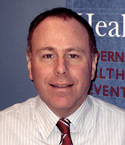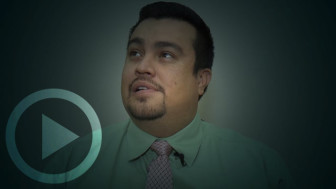 We all know that substance misuse can have long-term adverse effects on physical and mental health, academic and career attainment, relationships with family and friends, and establishing and being a connected part of a community
We all know that substance misuse can have long-term adverse effects on physical and mental health, academic and career attainment, relationships with family and friends, and establishing and being a connected part of a community
And we know that more than 90 percent of adults who develop a substance use disorder began using before their 18th birthday — signaling that we must work to prevent and control substance misuse before people develop problems in the first place.

Three young men in recovery reflect on their youth and how their addictions were mishandled by their mentors, teachers and coaches.
The most troubling thing in our recent Trust for America’s Health report — “Reducing Teen Substance Misuse: What Really Works” — supported by the Conrad N. Hilton Foundation — is that by and large the strategies we try to use to address substance abuse do not match what the research says would work. And, we do not invest nearly enough on preventing use in the first place. We end up paying much more to treat problems down the road. Piling on to this, we do not then provide enough resources to effectively support evidence-based treatment and recovery approaches.
More than 40 years of research exists from the National Institutes of Health and other experts that supports this approach, but there has been a disconnect in implementing the science into real-world practice. A prevention-oriented approach — building positive protective factors and reducing risk factors — can decrease the chances of tweens and teens initiating, regularly using or developing an addiction to alcohol and/or drugs.
For instance, if we invested more in things like supportive environments, effective conversations and counseling, and brief interventions on the front end we could prevent the escalation of substance misuse. Many of these approaches can be implemented in schools and are proven to improve academic and outcomes.
This approach not only lowers the chances for substance misuse, but also has a bigger impact, since similar underlying root causes have been shown to contribute to increased likelihood of poor academic performance, bullying, depression, violence, suicide, unsafe sexual behaviors and other problems that can emerge during teenage years.
The current troubling prescription drug and heroin epidemics are the latest urgent reminder of our need to rethink and redouble our nation’s approach and commitment to addressing substance misuse.
To clearly define what this type of approach looks like, we outlined a series of recommendations in “Reducing Teen Substance Misuse.”
[Related: Parents as First Responders in Adolescent Substance Use]
Put prevention first by implementing evidence-based approaches across communities and schools. Each state should have a coordinating infrastructure like EPIScenter or a similar Center of Excellence to serve as an end-to-end network of experts and resources to support the effective community-based selection, adoption, implementation and evaluation of preventive programs.
Strategically invest in evidence-based programs that show the strongest results in reducing risk factors for substance misuse, poor academic performance, bullying, depression, violence, suicide, unsafe sexual behaviors and other problems that often emerge during youth.
Integrate school-based and wider community efforts via multisector collaboration. Effectively collect data to assess community needs and better select programs that match those needs and improve accountability. We need to be able to match different approaches to different communities.
Incorporate SBIRT (Screening, Brief Intervention and Referral to Treatment) as a routine practice in middle and high schools and health-care settings. Many tweens and teens are never asked or counseled about their well-being or thoughts on substance use. Often, young people with substance use disorders are left to struggle on their own and are given signals that they should hide their problems. Making SBIRT and other health screenings routine could make discussion and learning about substance use a regular practice.
Increase funding and support for sustained and ongoing mental health and substance use treatment and recovery. Currently, only about one in every 10 young people who need treatment are getting it. And, even if they get treatment, it is often insufficient and too short. In addition, there are many areas in the country, particularly in rural areas, where there are few or no trained professionals. We need to rethink how we are providing care, including by expanding training and workforce development.
In short, we need to move beyond “just say no,” which is tantamount to putting our heads in the sand. This isn’t a problem of individual willpower. We must stop denying that problems exist until we can no longer ignore them — after they have already become serious and hard to overcome.
Richard Hamburg, interim president and CEO at Trust for America’s Health (TFAH), oversees public policy initiatives, advocacy campaigns and internal operations and has more than 25 years of experience as a leading health policy advocate. TFAH is a nonprofit, nonpartisan organization dedicated to saving lives by protecting community health and working to make disease prevention a national priority.
More related articles:
Fewer Teens Drink, Smoke Cigarettes, Pot Use Stagnant, More Suffer Depression: Report
Convicted on Drug Charges, Georgia Youth Faces Life After Rehab
What Is Wrong With the Recovery Movement?































